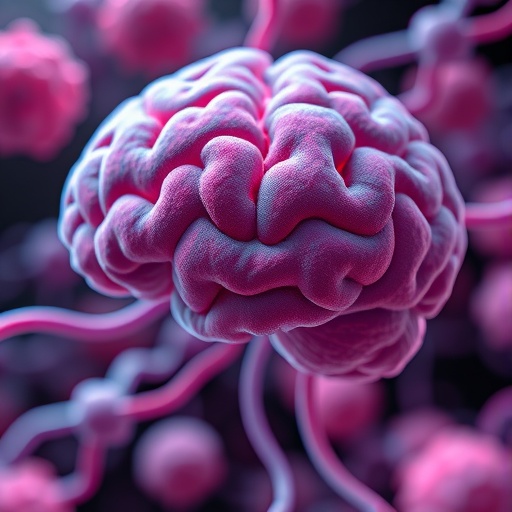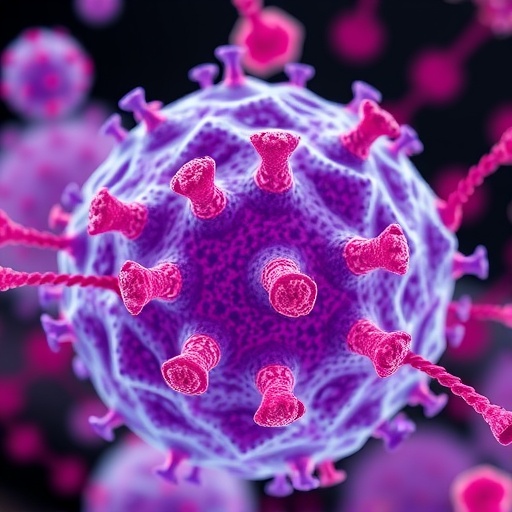In a groundbreaking discovery that could redefine cancer therapeutics, researchers have uncovered the pivotal role of copper-induced cell death in glioma, a common and aggressive brain tumor. The new study explores cuproptosis—a recently identified form of regulated cell death driven by copper ions—and reveals that genes associated with this process, known as cuproptosis-related genes (CRGs), may hold the key to revolutionizing how gliomas are treated. This insight opens the door to innovative strategies targeting the subtle balance of copper metabolism within tumor cells, offering hope for improved prognosis and personalized therapies in glioma management.
Gliomas, notorious for their aggressive nature and resistance to conventional treatments, have long challenged oncologists. Previous research primarily focused on genetic mutations and signaling pathways driving tumor growth, but the role of metal ions like copper has remained enigmatic until now. Copper is an essential trace element within all living cells, involved in vital enzymatic functions; however, its dysregulation can lead to toxicity and cell death. The phenomenon of cuproptosis specifically highlights how excess copper interferes with mitochondrial functions resulting in cell demise, an effect that could be harnessed to eradicate tumor cells selectively.
Leveraging advanced bioinformatics analyses coupled with rigorous laboratory experiments, the researchers conducted a comprehensive evaluation of CRGs in glioma tissues compared to healthy controls. Their findings pinpointed a cohort of genes— including SLC31A1, FDX1, DLST, LIPT1, LIPT2, DLD, NFE2L2, ATP7A, DLAT, GCSH, and ATP7B—that showed marked differential expression in tumor cells. This differential gene expression pattern underscores the complexity of copper metabolism in glioma biology and highlights potential molecular vulnerabilities that can be exploited therapeutically.
Among the CRGs investigated, SLC31A1 emerged as a central player due to its pivotal role in copper transport across cell membranes. Elevated expression levels of SLC31A1 were closely linked with heightened malignancy in glioma cells, characterized by accelerated proliferation rates and increased migratory capacity—two hallmarks of aggressive cancer behavior. Functional assays demonstrated that manipulating SLC31A1 levels directly influenced tumor aggressiveness, suggesting its promise as a critical molecular target.
Moreover, the study delved into the impact of a novel mitotic inhibitor, designated MP-HJ-1b, which exhibited remarkable efficacy in suppressing SLC31A1 expression. Treatment with MP-HJ-1b not only curtailed the elevated proliferative tendencies of glioma cells but also hampered their migration. This dual inhibitory effect positions MP-HJ-1b as a promising therapeutic candidate that exploits the copper-dependent vulnerabilities in glioma cells by regulating essential cuproptosis pathways.
Beyond these molecular insights, the research holds significant prognostic implications. By integrating survival curve analyses and Cox proportional hazard models, investigators established a robust correlation between CRG expression profiles and patient outcomes. Patients exhibiting a high-risk CRG signature displayed significantly poorer prognoses, spotlighting these genes as prognostic biomarkers. Such markers could be crucial in guiding clinical decision-making, enabling tailored therapeutic approaches based on individual CRG expression landscapes.
The study also ventured into the immunological domain, evaluating tumor mutational burden in the context of cuproptosis-related genetic profiles. High tumor mutational burden is often predictive of favorable responses to immunotherapies, and intriguingly, CRG expression was suggested to serve as a biomarker for predicting immunotherapy efficacy in glioma patients. This revelation paves the way for combining cuproptosis-targeted treatments with immune checkpoint inhibitors or other forms of immunomodulation, potentially synergizing to enhance therapeutic outcomes.
This pioneering work underscores the untapped potential of exploiting metal ion biology in oncology, particularly through the lens of regulated cell death modalities. Cuproptosis adds a new dimension to the existing paradigms of programmed cell death such as apoptosis, necroptosis, and ferroptosis, broadening the arsenal available to cancer researchers and clinicians. Understanding the precise mechanisms through which copper perturbs mitochondrial function and induces cell death could inspire the design of next-generation therapeutics with enhanced specificity and minimized off-target effects.
The therapeutic implications of these findings extend beyond glioma. Copper metabolism dysregulation has been observed in various cancer types, suggesting that insights gained from CRG profiling and manipulation may have wider applicability. However, the delicate balance of copper required for normal cellular physiology necessitates a nuanced approach to therapeutic development, ensuring that strategies targeting cuproptosis do not inadvertently harm healthy tissue.
Future research will undoubtedly delve deeper into the molecular underpinnings of cuproptosis, aiming to unravel the precise interactions between copper ions, mitochondrial enzymes, and regulatory proteins. Additionally, the development of selective modulators of CRGs, along with biomarkers for patient stratification, will be essential steps toward translating these findings into effective clinical interventions. The convergence of genomics, bioinformatics, and pharmacology embodied in this study sets a precedent for integrative cancer research moving forward.
Overall, this study heralds a new era wherein the metallobiology of cancer cells is recognized as a critical frontier. The intricate dance between copper ions and the genetic machinery governing cell survival represents both a vulnerability and an opportunity. By harnessing the power of cuproptosis-related genes, the next wave of glioma therapies could invoke precision medicine tailored not only to genetic mutations but also to the metabolic and metal ion-dependent vulnerabilities of tumors.
The revelation that targeting cuproptosis pathways can suppress tumor growth and improve patient prognostics redefines glioma treatment paradigms. It emphasizes the need for multidisciplinary approaches, combining molecular biology, chemistry, and clinical oncology to innovate therapeutic regimens. As research progresses, it is anticipated that cuproptosis-based strategies will integrate seamlessly into comprehensive glioma management, potentially transforming grim prognoses into manageable conditions.
In conclusion, the identification and characterization of CRGs in glioma represent a significant leap forward in understanding the disease’s molecular essence. This innovative research provides a compelling rationale for incorporating cuproptosis modulation into anticancer strategies, adding a powerful tool against one of the most formidable brain tumors. The prospect of copper’s dual nature—as both a life-essential element and a trigger for lethal cell death—illustrates the nuanced interplay that future cancer therapies will exploit to maximize efficacy while minimizing harm.
Subject of Research: Copper-induced regulated cell death (cuproptosis) and its role in glioma treatment through the study of cuproptosis-related genes (CRGs).
Article Title: Copper’s new role in cancer: how cuproptosis-related genes could revolutionize glioma treatment.
Article References:
Wang, Y., Qiao, S., Wang, P. et al. Copper’s new role in cancer: how cuproptosis-related genes could revolutionize glioma treatment. BMC Cancer 25, 859 (2025). https://doi.org/10.1186/s12885-025-14151-7
Image Credits: Scienmag.com
DOI: https://doi.org/10.1186/s12885-025-14151-7
Tags: advanced bioinformatics in cancer researchcopper metabolism and tumor cellscopper-induced cell death mechanismscuproptosis in glioma treatmentcuproptosis-related genes in cancerglioma resistance to conventional therapiesinnovative glioma therapeutic strategiesmitochondrial dysfunction in glioma cellspersonalized medicine for brain tumorsrole of metal ions in cancertargeted therapies for glioma managementtransformative approaches to glioma prognosis





